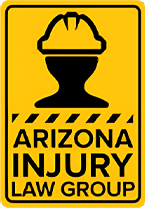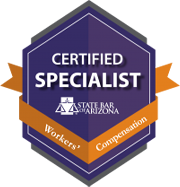Crane Accidents and Big Machinery Safety on the Job

Crane accidents have been reduced since 1992 when tracking and recording crane accidents and fatalities first began. In 2017, there were 33 fatalities nationwide, due to crane accidents, and this amount is considered the lowest count since 1992, as reported at WorkersCompensation.com.
Depending on the work site, some cranes will remain in place at the end of a workday, while others must be dismantled, due to safety reasons such as resting on unstable foundations. Even when following the federal Occupational Safety and Health Administration (OSHA) standards for proper safety maintenance of a work site, the unexpected can happen, quickly and brutally.
Weathering the Storms
Recent severe storms in early June, along with high winds around 71 miles per hour, caused a Peiner SK 415-20 tower crane on a building in Dallas, Texas, to fall over. As it fell, it plowed into an apartment building, killing a resident and injuring five others in their own homes.
Another crane nearby remained stabilized, according to a Dallas Morning News report online, which also showed a video of the disaster taken by a nearby resident. The question in the case now is determining in what state the crane was left in after the last worker finished work the previous day, as no one was working with the crane on the day of the storms and high winds.
Using Appropriate Monitoring Systems
As our world becomes more digitalized, so does the workplace, including construction sites. Software programs are now available for project-managing a complete construction project along with updating safety status of large machines (i.e., cranes), worker schedules and incident reports, and which employees are working on the site when an evacuation is implemented. All workers must be accounted for when a site is shut down due to violent weather conditions. Some software programs also send useful weather alerts which then allows site managers to send out a mass emergency message to all workers to shut everything down and secure heavy machinery as a storm moves closer to the location.
One solution to cranes that must remain in the place of operation, is to unlock the crane brake, allowing the arm to move freely with the wind (“weather-vaning”). Alternatively, automated weather sensors installed on cranes can also automatically release the brakes independently of any site manager having to oversee that function.
In an odd twist of fate, CBS News in the Dallas-Fort Worth (DFW) area of North Texas had, just one month before the Dallas accident, put out an article regarding the statistics of crane accidents with fatalities (40) in Texas as being the highest in the nation between the years 2011 to 2015. By federal law, all crane operators must now be certified to operate a crane as of December 2018.
Safety is Everyone’s Responsibility
Crane accident fatalities can happen at any time, in any place and state. If there is an unsafe situation at a worksite, then it should be reported quickly. If a machine operator leaves equipment or big machines in a certain state that was correct at the time, but with weather conditions changing the situation, then the operator should notify the site manager to rectify the situation.
At the same time, if an unsafe condition occurs and it is reported, but nothing is done to solve the problem, then it should be reported. Be sure to document the situation and, if possible, note witnesses to the situation to support your case. Reporting unsafe work conditions saves lives.
If you need help with a workers’ compensation claim or if you need advice on what to do about unsafe working conditions, call us for a consultation. We can help. 602-346-9009.
Get Help Today
Call Immediately For A Free, No Obligation Consultation And Let Us Help You Put Your Life Back On Track. Let Us Help You
Regain Normalcy And Stability Again. We Want To Help You Get The Benefits You Need And Deserve!


